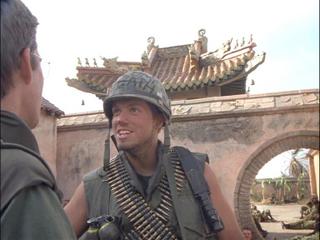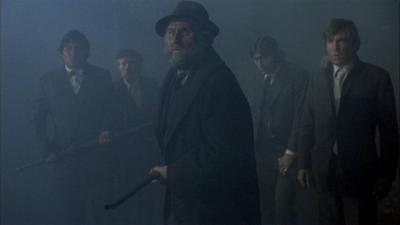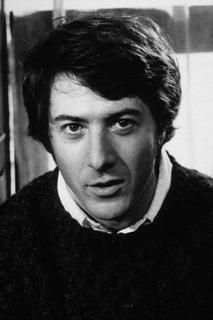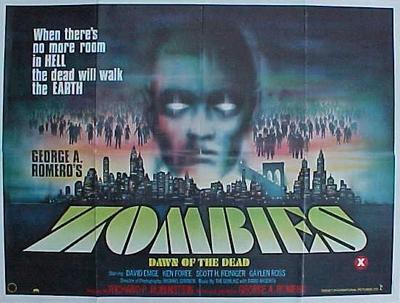Full Metal Jacket (Stanley Kubrick, 1987): Class Handout

Significantly, very few films were made about America’s involvement in Vietnam during the war itself, with the exception of the jingoistic John Wayne vehicle The Green Berets (1968) and Elia Kazan’s little-seen movie The Visitors (1972).
The Visitors was the first fiction film to openly question America’s involvement in Vietnam, but following the success of Coppola’s Apocalypse Now (1979), in the late 1970s and throughout the 1980s a significant number of American films were made about Vietnam that openly criticised America’s involvement in the war. These films include Hamburger Hill (John Irvin, 1987) and several films by Oliver Stone, who was himself a veteran of the war: Platoon (1986), Born on the Fourth of July (1989) and Heaven & Earth (1993).
Also during this period, American authors began to write about Vietnam; the most significant author to deal with the trauma of the Vietnam War is possibly Tim O’Brien, who enlisted as an infantry soldier in Vietnam following his degree. O’Brien’s most famous books include the semi-autobiographical If I Die in a Combat Zone, the collection of short stories The Things They Carried and the magical realist novel Going After Cacciato.
In 1985, veteran filmmaker Stanley Kubrick announced his decision to make Full Metal Jacket; the film was completed in 1986 and released in early 1987. Kubrick had previously directed such significant films as Spartacus (1960), A Clockwork Orange (1971), The Shining (1980), Barry Lyndon (1976) and the anti-war movies Paths of Glory (1957) and Dr Strangelove (1964).
Kubrick had made his home in Britain, and refused to leave the British Isles. Consequently, Full Metal Jacket was shot in the UK, with the Isle of Dogs (in London) standing in for Vietnam.
The film was based on two sources: journalist Michael Herr’s Dispatches (from which, like Apocalypse Now, Full Metal Jacket ‘borrowed’ much of its narrative voice), and a novel by Gustav Hasford entitled The Short Timers.
The film is divided into two sections: the first half of the film depicts the dehumanising training the new recruits experience in the US (and ending with ‘Private Pyle’s (Vincent D’Onofrio) suicide), and the second half of the film follows ‘Private Joker’ (Matthew Modine) during the 1968 Tet Offensive. This section of the film depicts the damage caused by war and the physical and psychological harm experienced by the young men who served in Vietnam. Vietnam is presented as an ‘other place’, something close to a Hell in which moral codes do not apply. The soldiers’ merciless killing of a female sniper at the end of the film is presented as the logical consequence of the training they have received at home, during which they have learned to see both their enemies and themselves as less than human: as one of the characters states, ‘After we rotate back to the world, we’re gonna miss not having anyone around that’s worth shooting’. Originally, Kubrick wanted to end the film with a sequence depicting the troops playing football with the woman’s head, but decided that this scene was too heavy-handed, and chose to omit it in his final cut of the film.
(Vincent D’Onofrio) suicide), and the second half of the film follows ‘Private Joker’ (Matthew Modine) during the 1968 Tet Offensive. This section of the film depicts the damage caused by war and the physical and psychological harm experienced by the young men who served in Vietnam. Vietnam is presented as an ‘other place’, something close to a Hell in which moral codes do not apply. The soldiers’ merciless killing of a female sniper at the end of the film is presented as the logical consequence of the training they have received at home, during which they have learned to see both their enemies and themselves as less than human: as one of the characters states, ‘After we rotate back to the world, we’re gonna miss not having anyone around that’s worth shooting’. Originally, Kubrick wanted to end the film with a sequence depicting the troops playing football with the woman’s head, but decided that this scene was too heavy-handed, and chose to omit it in his final cut of the film.
Full Metal Jacket divides audiences: some people see it as uneven, and upon its release the film came under severe criticism for its language and its representation of violence. Other Kubrick movies had been criticised for their representation of violence, including A Clockwork Orange, which Kubrick himself withdrew from circulation in the UK following allegations of copycat violence.
The Technical Advisor for the film was R. Lee Ermey, who had served as a Gunnery Sergeant in the Marines, and who plays the drill instructor during the first half of the film.

‘The dead know only one thing: that it is better to be alive’.
©Paul Andrew Julian Lewis, 2005The Visitors was the first fiction film to openly question America’s involvement in Vietnam, but following the success of Coppola’s Apocalypse Now (1979), in the late 1970s and throughout the 1980s a significant number of American films were made about Vietnam that openly criticised America’s involvement in the war. These films include Hamburger Hill (John Irvin, 1987) and several films by Oliver Stone, who was himself a veteran of the war: Platoon (1986), Born on the Fourth of July (1989) and Heaven & Earth (1993).
Also during this period, American authors began to write about Vietnam; the most significant author to deal with the trauma of the Vietnam War is possibly Tim O’Brien, who enlisted as an infantry soldier in Vietnam following his degree. O’Brien’s most famous books include the semi-autobiographical If I Die in a Combat Zone, the collection of short stories The Things They Carried and the magical realist novel Going After Cacciato.
In 1985, veteran filmmaker Stanley Kubrick announced his decision to make Full Metal Jacket; the film was completed in 1986 and released in early 1987. Kubrick had previously directed such significant films as Spartacus (1960), A Clockwork Orange (1971), The Shining (1980), Barry Lyndon (1976) and the anti-war movies Paths of Glory (1957) and Dr Strangelove (1964).
Kubrick had made his home in Britain, and refused to leave the British Isles. Consequently, Full Metal Jacket was shot in the UK, with the Isle of Dogs (in London) standing in for Vietnam.
The film was based on two sources: journalist Michael Herr’s Dispatches (from which, like Apocalypse Now, Full Metal Jacket ‘borrowed’ much of its narrative voice), and a novel by Gustav Hasford entitled The Short Timers.
The film is divided into two sections: the first half of the film depicts the dehumanising training the new recruits experience in the US (and ending with ‘Private Pyle’s
 (Vincent D’Onofrio) suicide), and the second half of the film follows ‘Private Joker’ (Matthew Modine) during the 1968 Tet Offensive. This section of the film depicts the damage caused by war and the physical and psychological harm experienced by the young men who served in Vietnam. Vietnam is presented as an ‘other place’, something close to a Hell in which moral codes do not apply. The soldiers’ merciless killing of a female sniper at the end of the film is presented as the logical consequence of the training they have received at home, during which they have learned to see both their enemies and themselves as less than human: as one of the characters states, ‘After we rotate back to the world, we’re gonna miss not having anyone around that’s worth shooting’. Originally, Kubrick wanted to end the film with a sequence depicting the troops playing football with the woman’s head, but decided that this scene was too heavy-handed, and chose to omit it in his final cut of the film.
(Vincent D’Onofrio) suicide), and the second half of the film follows ‘Private Joker’ (Matthew Modine) during the 1968 Tet Offensive. This section of the film depicts the damage caused by war and the physical and psychological harm experienced by the young men who served in Vietnam. Vietnam is presented as an ‘other place’, something close to a Hell in which moral codes do not apply. The soldiers’ merciless killing of a female sniper at the end of the film is presented as the logical consequence of the training they have received at home, during which they have learned to see both their enemies and themselves as less than human: as one of the characters states, ‘After we rotate back to the world, we’re gonna miss not having anyone around that’s worth shooting’. Originally, Kubrick wanted to end the film with a sequence depicting the troops playing football with the woman’s head, but decided that this scene was too heavy-handed, and chose to omit it in his final cut of the film.Full Metal Jacket divides audiences: some people see it as uneven, and upon its release the film came under severe criticism for its language and its representation of violence. Other Kubrick movies had been criticised for their representation of violence, including A Clockwork Orange, which Kubrick himself withdrew from circulation in the UK following allegations of copycat violence.
The Technical Advisor for the film was R. Lee Ermey, who had served as a Gunnery Sergeant in the Marines, and who plays the drill instructor during the first half of the film.

‘The dead know only one thing: that it is better to be alive’.












